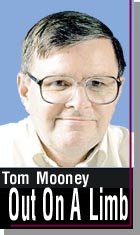Search 'Net to find our tragic past
Anthracite coal mining was one of the dirtiest, most thankless and most dangerous jobs of its time. Every day from the mid-19th through the mid-20th centuries, many thousands of men descended on elevators or rail cars deep into the mines that dotted Luzerne County. If they were lucky, they survived in one piece. Explosions, cave-ins and deadly gases were just a few of the daily hazards they faced. Now on Luzerne County Genweb is a list of major or otherwise newsworthy mining accidents from the Wilkes-Barre and Scranton areas from 1846 to 1963. It might help you pin down the date and location of an event involving one of your ancestors. To access it, go into the Times Leader's Web site at www.leader.net. Click on "Generations," and there you will find a link to Genweb, which is a compendium of local genealogical material. Look through Genweb's table of contents for "Mine Information." Open it up and you'll find right at the top the heading for the long list that will give you dates, locations, numbers of dead and notes on how the accident occurred. The list is not exhaustive. Most miners who were killed on the job died alone and in obscurity. But it does offer a lot of historical information on the larger incidents. From there you can go to newspaper backfiles for additional information. The list makes melancholy reading. Some accidents have entered into local folklore. The 1869 Avondale fire took more than 100 lives, while 58 died in a "squeeze," or collapse of a mine roof, in the Twin Shaft disaster at Pittston in 1896. The most famous of modern accidents was the loss of 12 men in 1959 when the Susquehanna River broke through mine workings near Pittston and flooded many of the area's deep mines, killing off what remained of the industry. There seemed no end to the dangers of mining. In 1875, six men died at the Nanticoke shaft when a platform broke and they fell 540 feet to the bottom of the workings. In 1908 at the Warrior Run shaft, four were killed when the mine rail car in which they were riding up a slope was struck by a runaway car heading downward. Be prepared to hit your dictionary - a big dictionary. Few people today know the meanings of such once-common mining terms as "white damp" and "sheave wheels," both of which figure in several of the accidents. For many people with roots in Northeastern Pennsylvania, the list should prove a good genealogical tool. It also shows those of us who do our genealogy from the comfort of air-conditioned libraries or computerized home offices that maybe "the good old days" weren't so good after all. Searching: JoAnne Turner of Ohio is looking for information on her great-grandfather, William David Joel, born 1863 in Wales, brought to America about 1869, married Minnie Mae Hartong in 1893 and moved to Ohio. A resident of Plymouth, Joel worked in the area's coal mines and was a member of the Presbyterian Church in Plymouth. Turner has been unable to find him in local census records. Contact Turner by postal mail at 617 Stafford Drive, Tallmadge, Ohio 44278; by phone at (330) 633-4500; or by e-mail at jabturner@aol.com.
Local History Moment: The "elite" families of Wilkes-Barre? The expression sounds odd in these egalitarian times. But a century ago, the area did have its own social register, listing the families considered to be the very bluest of the blue-bloods. They were the families that owned or managed the big businesses, occupied top professional standing and sent their sons on to Ivy League colleges. Locked away behind glass in the Osterhout Free Library is a faded little 1900 edition of "The Scranton and Wilkes-Barre Society Blue Book." Probably created so that the couples would know whom to invite to their soirees, it lists all the top families of the day, along with their club memberships, their children and the days on which the wives stayed home to receive guests. There is even a seating plan for Wilkes-Barre's elegant old Nesbitt Theater, the favorite entertainment haunt of the upper classes in those days. A surprising number of these families remain in the area and continue as community leaders. But the world their ancestors inhabited is largely gone. The once-grand West North Street or South Franklin Street homes at which guests arrived bedecked in Victorian finery have been demolished or turned into apartment buildings. Only in the little, purse-sized book remain quaint but still-stirring memories of their achievements, aspirations and social grace. News Notes: Dean Sawyer will speak on "The Value of Researching Cemetery Records" at the meeting of the Northeast Pennsylvania Genealogical Society at 7 p.m. Tuesday. Meetings are held in the second-floor meeting room of the Department of Veterans Affairs Medical Center, Wilkes-Barre. You do not have to be a member to attend. Dean is former president of the society. He and his wife Marjery, aided by volunteers, are working on the long-term project of compiling and indexing records of all cemeteries in the area.
Have you solved some tough genealogical problems in your research? Do you have some tips you'd like to share with others? Would you like to report a success story? Drop me a line here at the paper. I'll get in touch with you and help you bring the benefits of your experience to others. Tom Mooney, The Times Leader, 15 N. Main St., Wilkes-Barre, Pa. 18711. e-mail is mailto:tmoony@leader.net.
|
